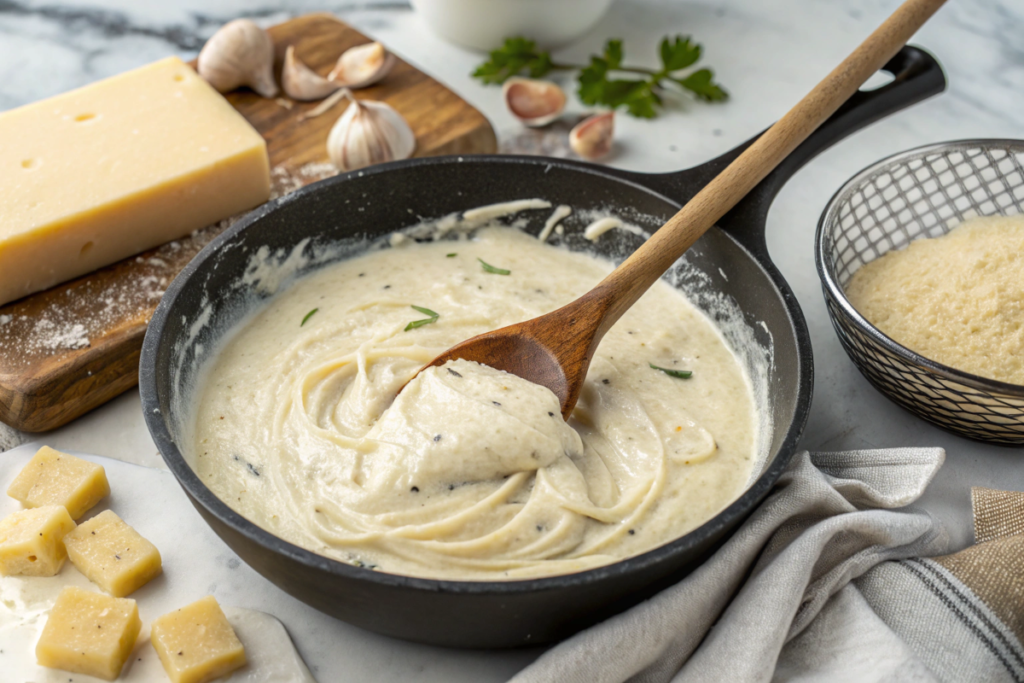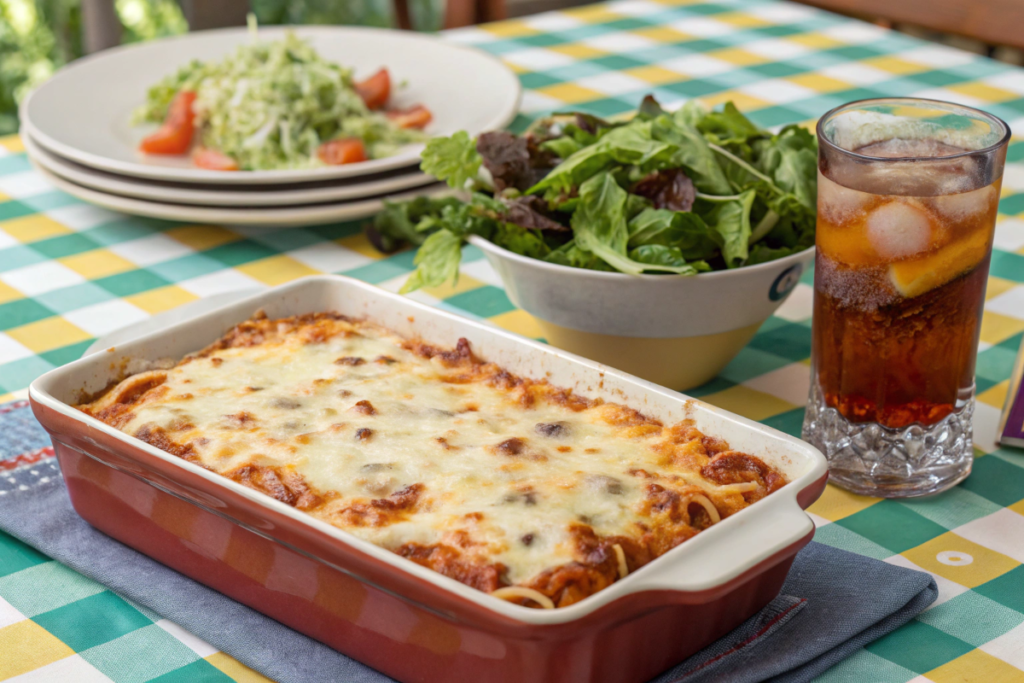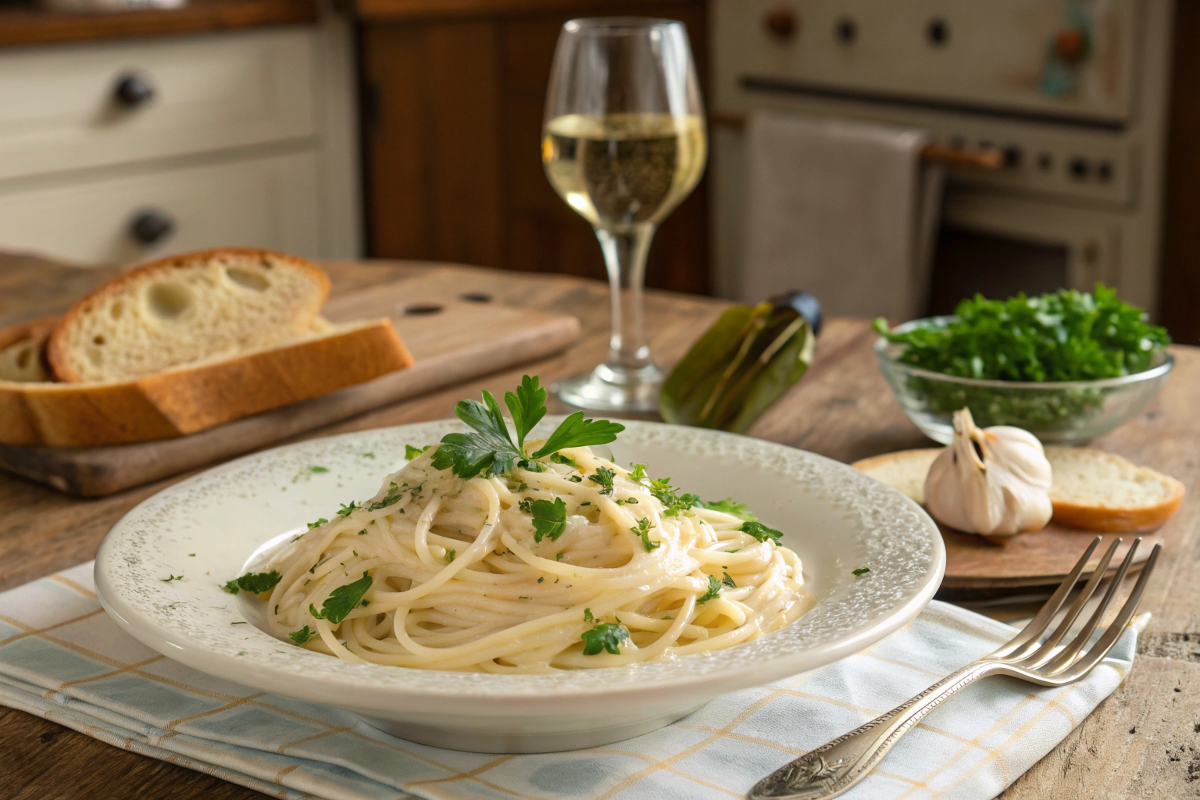When it comes to comforting, creamy, and downright delicious meals, this pasta dish sits high on the list. It masterfully combines the simplicity of spaghetti with the indulgent richness of Alfredo sauce. Whether you’re a seasoned chef or a home cook looking for an easy yet impressive recipe, this guide has you covered. We’ll explore the history, essential ingredients, preparation techniques, popular variations, and tips for perfect pairings. By the end, you’ll not only master this classic but also feel inspired to put your own spin on it. Let’s dive into the creamy world of this beloved dish!
Introduction to Alfredo Spaghetti
What is Alfredo Spaghetti?
At its core, alfredo spaghetti is a creamy pasta dish that combines the comforting texture of spaghetti noodles with the velvety richness of Alfredo sauce. Unlike other pasta recipes, which often rely on tomato-based sauces, this dish is a celebration of buttery, cheesy goodness. Its appeal lies in its simplicity—just a handful of ingredients transform into a decadent plate of comfort food.
This dish isn’t limited to fine dining restaurants; it’s just as popular in home kitchens worldwide. The magic of alfredo spaghetti is its versatility—it’s a blank canvas that can be enhanced with proteins, vegetables, or even a pinch of spice for those who like a little heat.
Brief History of Alfredo Sauce and Its Origins
The story of Alfredo sauce begins in Rome, Italy, where Alfredo di Lelio invented the original dish in the early 1900s. His simple recipe, made with butter and Parmesan cheese, was designed to please his wife during her pregnancy. Word spread quickly, and before long, tourists from around the world were flocking to his restaurant for a taste.
As the recipe crossed borders, it evolved to include heavy cream, garlic, and other enhancements. Today, alfredo spaghetti is a global sensation, with countless variations and modern twists.
Why Alfredo Spaghetti is a Global Favorite
What makes alfredo spaghetti such a beloved dish? Its universal appeal lies in its rich flavor and comforting texture. This dish is the ultimate crowd-pleaser—it’s quick to prepare, customizable to suit different tastes, and perfect for weeknight dinners or special occasions. Plus, the way the creamy sauce clings to the spaghetti ensures every bite is indulgent.
The dish’s flexibility also contributes to its popularity. From adding shrimp to creating a baked version, alfredo spaghetti can adapt to a wide variety of palates and preferences, making it a staple in kitchens across the globe.
Ingredients for Alfredo Spaghetti
Core Ingredients for Authentic Alfredo Sauce
The key to a truly satisfying alfredo spaghetti lies in its rich, creamy sauce. The main ingredients—butter, heavy cream, and Parmesan cheese—form the foundation. Butter creates a luxurious texture, while heavy cream provides the velvety smoothness that makes this dish irresistible. Freshly grated Parmesan cheese adds the signature nutty flavor that ties everything together.
To elevate the sauce, consider high-quality butter and Parmesan. Using fresh, full-fat cream ensures the sauce remains indulgent and doesn’t break while cooking.
Enhancements: Adding Garlic, Herbs, and Spices
While the traditional recipe is a minimalist delight, enhancements like minced garlic or garlic powder can add depth. Fresh herbs like parsley or basil not only enhance the flavor but also give the dish a fresh, vibrant look. A pinch of nutmeg or red pepper flakes can provide a subtle warmth or spice for those seeking a bolder taste.
For an exciting twist, try incorporating shredded mozzarella for added creaminess or a splash of white wine for a sophisticated touch.
Selecting the Perfect Spaghetti for Alfredo Sauce
The choice of pasta matters. Classic durum wheat spaghetti is the most common option for alfredo spaghetti. For an even richer dish, fresh spaghetti made from eggs and flour works beautifully. Cooking the spaghetti al dente ensures the noodles hold their shape when coated with the sauce.
How to Prepare Alfredo Spaghetti
Step-by-Step Guide to Making Alfredo Sauce

Start by melting butter in a large pan over medium heat. Add minced garlic if desired, sautéing until fragrant. Slowly pour in the heavy cream, whisking constantly to avoid scorching. Reduce the heat to low and let the mixture simmer until it thickens slightly. Gradually stir in freshly grated Parmesan cheese, ensuring it melts completely for a silky, creamy texture.
Cooking and Preparing Spaghetti Noodles
While preparing the sauce, bring a pot of salted water to a rolling boil. Add the spaghetti and cook according to the package instructions, ensuring it’s al dente. Reserve a cup of pasta water before draining, as this can help adjust the sauce’s consistency later.
Combining Sauce and Spaghetti: Achieving Perfection
Add the cooked spaghetti to the pan with the Alfredo sauce, tossing to coat evenly. If the sauce is too thick, use the reserved pasta water to thin it out gradually. Season with freshly ground black pepper to enhance the flavor.
Secrets to a Creamy Alfredo Spaghetti
Consistency is everything. Avoid overheating the sauce as it can cause the cream to separate. Stirring continuously helps maintain a uniform texture. Additionally, using freshly grated Parmesan rather than pre-shredded ensures the sauce remains smooth and lump-free.
Variations of Alfredo Spaghetti
Classic Variations: Chicken Alfredo Spaghetti, Shrimp Alfredo
If you’re looking to add a protein-packed twist to alfredo spaghetti, chicken and shrimp are popular choices. Grilled or pan-seared chicken breast complements the creamy sauce beautifully. For a quick fix, shred rotisserie chicken and stir it into the spaghetti. Shrimp Alfredo is another crowd-pleaser. Sauté shrimp in butter and garlic, then toss it with the pasta for a seafood-inspired version.
Both variations are easy to customize. You can add a squeeze of lemon juice to balance the richness or sprinkle red pepper flakes for a hint of heat. Either way, these options turn a classic dish into a protein-rich meal.
Baked Alfredo Spaghetti Recipes

Baked alfredo spaghetti has taken the internet by storm, especially with the TikTok-inspired variations. To create a baked version, layer cooked spaghetti with Alfredo sauce, top it with shredded mozzarella and Parmesan, and bake until golden and bubbly. Some recipes also include marinara or meat sauces for a fusion of flavors.
This method is perfect for meal prep, as you can prepare it in advance and simply bake before serving. It’s also a great dish for gatherings since it can be made in large batches.
Diet-Friendly Options: Vegan and Gluten-Free Alfredo Spaghetti
For those with dietary restrictions, alfredo spaghetti can be adapted to suit different needs. A vegan version uses plant-based butter, cashew cream, and nutritional yeast to mimic the creamy texture and cheesy flavor. Gluten-free spaghetti made from rice or chickpeas ensures everyone can enjoy the dish without compromising on taste.
Adding vegetables like spinach or broccoli not only boosts nutrition but also enhances the dish’s visual appeal. With these variations, alfredo spaghetti becomes a versatile meal for any diet.
Pairing Alfredo Spaghetti with Sides and Drinks
Recommended Side Dishes for Alfredo Spaghetti
To balance the richness of alfredo spaghetti, pair it with light, refreshing sides. A crisp Caesar salad or a mixed green salad with tangy vinaigrette offers a contrast in texture and flavor. Garlic bread is a classic accompaniment, perfect for soaking up the creamy sauce.
Steamed or roasted vegetables like asparagus, broccoli, or zucchini also make excellent sides. They not only add a splash of color to your plate but also provide a healthy balance to the indulgent pasta.
Complementary Drinks: Wine, Juices, and More
For a sophisticated touch, serve alfredo spaghetti with a glass of white wine. Chardonnay or Sauvignon Blanc pairs wonderfully with the creamy sauce. For a non-alcoholic option, try sparkling water with a slice of lemon or a refreshing iced tea.
If you’re hosting a dinner party, consider serving a light dessert, such as lemon sorbet or fresh berries, to round out the meal. This ensures your guests leave satisfied but not overly full.
For more inspiration on side dishes or complementary drinks, check out other recipes on Giddy Recipes. Their collection of ideas can elevate any meal.
Common Mistakes and Troubleshooting
Mistakes to Avoid: Overcooking Sauce, Using the Wrong Cheese
One of the most common issues with alfredo spaghetti is overcooking the sauce. High heat can cause the cream to separate, leaving an unappetizing texture. To prevent this, always simmer the sauce on low to medium heat and stir frequently.
Another mistake is using pre-grated Parmesan cheese. While convenient, pre-grated cheese often contains additives that prevent it from melting smoothly. Opt for freshly grated Parmesan to achieve the creamy consistency that makes Alfredo sauce irresistible.
How to Fix Common Issues with Alfredo Spaghetti
If your sauce turns out too thick, don’t worry. You can easily thin it by adding a splash of reserved pasta water. On the other hand, if the sauce is too runny, allow it to simmer for a few more minutes to thicken naturally.
For a broken sauce, try whisking in a small amount of butter or cream to help it emulsify. If the spaghetti seems too bland, a sprinkle of salt, black pepper, or even garlic powder can quickly enhance the flavor.
Reheating and Storing Alfredo Spaghetti
When reheating alfredo spaghetti, use a stovetop instead of a microwave to maintain its creamy texture. Add a splash of milk or cream while reheating to bring the sauce back to life. For storage, keep leftovers in an airtight container in the fridge for up to three days.
To reduce the keyphrase density of “alfredo spaghetti” while maintaining readability and SEO value, here’s a revised version with fewer occurrences:
FAQs About Alfredo Spaghetti
What is Alfredo Sauce Made Of?
Alfredo sauce is a blend of butter, heavy cream, and Parmesan cheese. These simple ingredients create its luxurious base. For added flavor, garlic or herbs can be included, but the classic trio remains timeless.
What is This Dish Called in Italian Cuisine?
In Italy, a similar recipe is called “Fettuccine Alfredo.” It traditionally uses wide, flat pasta instead of spaghetti. The global rise in popularity of spaghetti with Alfredo sauce is due to its versatility and ease of preparation, though it’s not a traditional pairing.
Does Spaghetti Work with Alfredo Sauce?
Yes, spaghetti pairs beautifully with creamy sauces. Its long, thin strands hold the sauce well, offering a lighter alternative to fettuccine. This variation is ideal for those who enjoy smoother textures.
What is the Difference Between Carbonara and Alfredo?
The two sauces differ in key ingredients. Alfredo combines butter, cream, and Parmesan, creating a rich, creamy flavor. Carbonara uses eggs, pancetta, Pecorino cheese, and black pepper for a savory, silkier texture.
The Cultural Impact and Modern Takes
How This Dish Became a Global Comfort Food
Over the years, this creamy pasta has transitioned from a humble Italian dish to a worldwide favorite. Its simple ingredients and adaptability made it a household staple. In the U.S., Alfredo recipes became popular in the mid-20th century, evolving into countless creative variations.
Modern Interpretations and Creative Spins
From lobster Alfredo to plant-based versions, modern takes on this dish keep it fresh. Social media trends like baked pasta or fusion-style recipes have introduced this classic to new audiences, ensuring its relevance for generations.
Conclusion
Why It’s a Must-Try Dish
The combination of rich flavors and simple preparation makes this recipe an enduring favorite. Whether you prefer traditional or modern versions, its versatility ensures there’s a variation for everyone.
Get Creative!
Experimenting with ingredients—like adding proteins or vegetables—can make this dish uniquely yours. With endless options, your culinary creativity is the only limit!


1 thought on “The Ultimate Guide to Alfredo Spaghetti: Creamy, Delicious, and Easy”